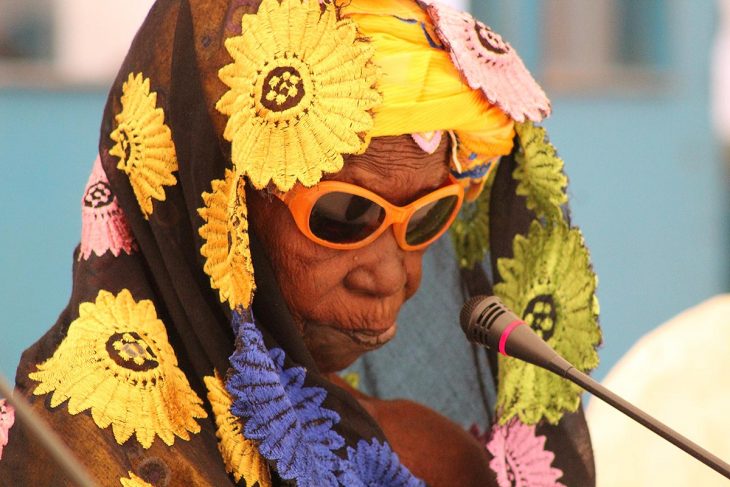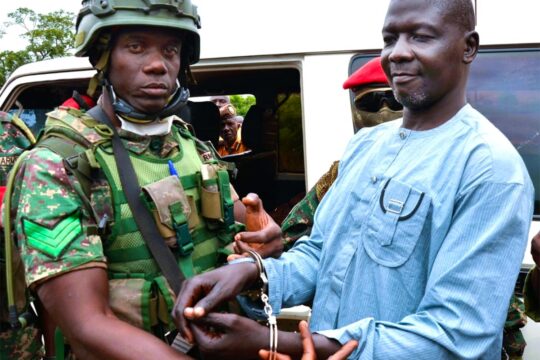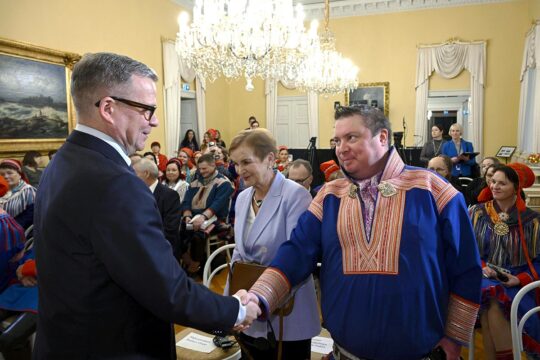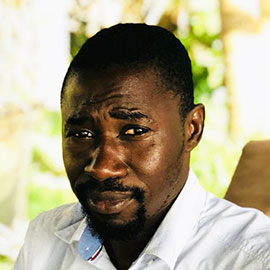Masirending Bojang was over 80 years old when she was captured in a village called Jambur, South-West of Banjul, Gambia’s capital city. More than ten years later, on November 20, this is where the country’s Truth, Reconciliation and Reparations Commission (TRRC) would meet Bojang to hear her story. The intense heat in the village and her poor health would not deter her. She lives near the market and the village mosque, which is where was the bus stop from where people would be picked up in 2009, as most witnesses would recall, to be transported and supposedly cured of an unestablished ailment.
In 2009, Gambia’s president Yahya Jammeh – who had ruled the country since a military coup in July 1994 and would continue to do so until he was forced out in January 2017 – decided on a witch hunt. People suspected of witchcraft were forced to drink concoctions that allegedly sent dozens to their graves. Over three thirds of the victims were old people, according to testimonies before the TRRC. The youngest who testified before the Commission was in his late forties when he was captured.
Ten years ago, anyone in Jambur would have seen the bus leaving. “I was selling peanuts in the village when one man held my hand and asked me to get into a bus. I asked them where we were being taken but they did not respond,” Masirending Bojang said. As she testified, her elder son Abdoulie Bojang, a private security consultant, sat by her. He was not in the village when the so-called witch doctors descended upon Jambur. He however received a call from a relative informing him that his mother and others had been “kidnapped”. “I drove my vehicle to various places, looking for them but I could not find them,” he told Justice Info in an interview after his mother’s testimony. It was only late in the evening of the following day that he got news that his mother and others had been released. Abdoulie Bojang started to record the names of people who had been taken. He got a list of 62, 49 of which being natives of Jambur.
But according to new evidence, the witch hunting affected hundreds of people. And the TRRC is trying to establish if Jammeh was behind it.
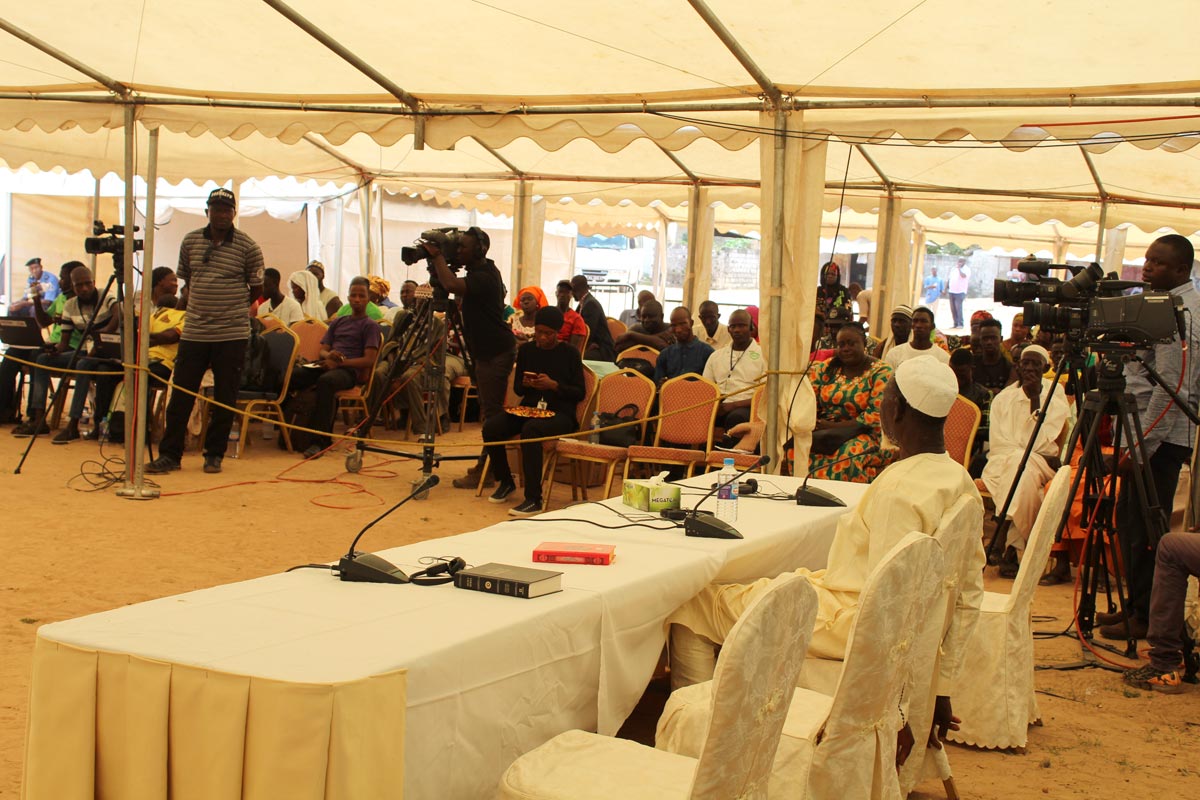
Jammeh’s phone call
Ensa Badgie was the former chief of the Gambian police. He told the TRRC that he was called one day by the president. “Former President Yahya Jammeh telephoned me personally. He told me Major Solo Bojang and some marabouts were coming. He told me: if you don’t comply, your head will roll. And if anyone does not comply, make sure the person is sacked,” said Badgie. Within 10 minutes after the call, the witch doctors arrived at his office. They were dressed in a red attire that had small mirrors and cowrie shells on it. They took off with dancing, drumming and chanting.
The five witch doctors were reportedly from Guinea. Also accompanying them were the Green Boys, a civilian vigilante group associated with Jammeh. Witnesses and victims consistently stated that soldiers and state vehicles accompanied the marabouts and that the head of their security team was Major Solo Bojang, a prominent member of Jammeh’s hit squad called the “Junglers”. (He had also been the president’s farm manager and a member of the Presidential guard.)
On January 2009, Mustapha Ceesay, a police officer, crossed path with the witch doctors. They claimed he was a wizard, Ceesay told the TRRC. On that day, he said 40 police officers were identified as witches and wizards. But Ceesay would not have it. He thought this was absolute nonsense and insisted he would not take their “cure”. He refused to be bathed and given a concoction. “The Inspector General of the Police [Ensa Badgie] said I was stubborn and I was not loyal to the President,” said Ceesay. As a result, he would be demoted from sergeant to the lowest rank, first class constable. He was also sent to Fatoto, the farthest police station from Banjul.
Other police officers would go with the witch doctors and drink their concoction at a compound in Kololi, about 30 minutes drive from the capital city. One of them was Kumba Jatta, who could not appear before the TRRC because of poor health and memory loss. His daughter, Mamjarra Jatta, blames his father’s poor medical condition on the concoction he drank that year.
It was not just the police officers who confirmed the involvement of state in witch hunting. A Gambian opposition figure, Halifa Sallah, investigated the activities of the witch doctors and published a report in his own newspaper Foroyaa. He was arrested on March 8, 2019, and charged with sedition and spying. Later, the charges would be changed to an attempt to incite people against “government policy on the screening of witches”. Eventually, after pressure from international human rights organizations the charges were dropped and Sallah was freed.
A deadly concoction
Yahya Jammeh’s lifestyle was deeply embedded in mysticism. He walked about with prayer bids and a book that looked like a Quran. He was known for organizing festivals where magicians competed. What remains more sketchy is Jammeh’s motives for witch hunting, the identity of the witch hunters and of the Green Boys, and the nature of the ingredients given to victims.
Out of 18 witnesses who testified before the commission, 13 had drunk the concoction and they all reported health problems. Abdoulie Bojang stated that 18 of those he had recorded on the list of people taken from Jambur village died. Similar stories were told of victims from other communities. Four health complications came up prominent in the narration of victims. They suffered blurred vision - as Masirending Bojang had -, hypertension, severe body ache and excessive headache.
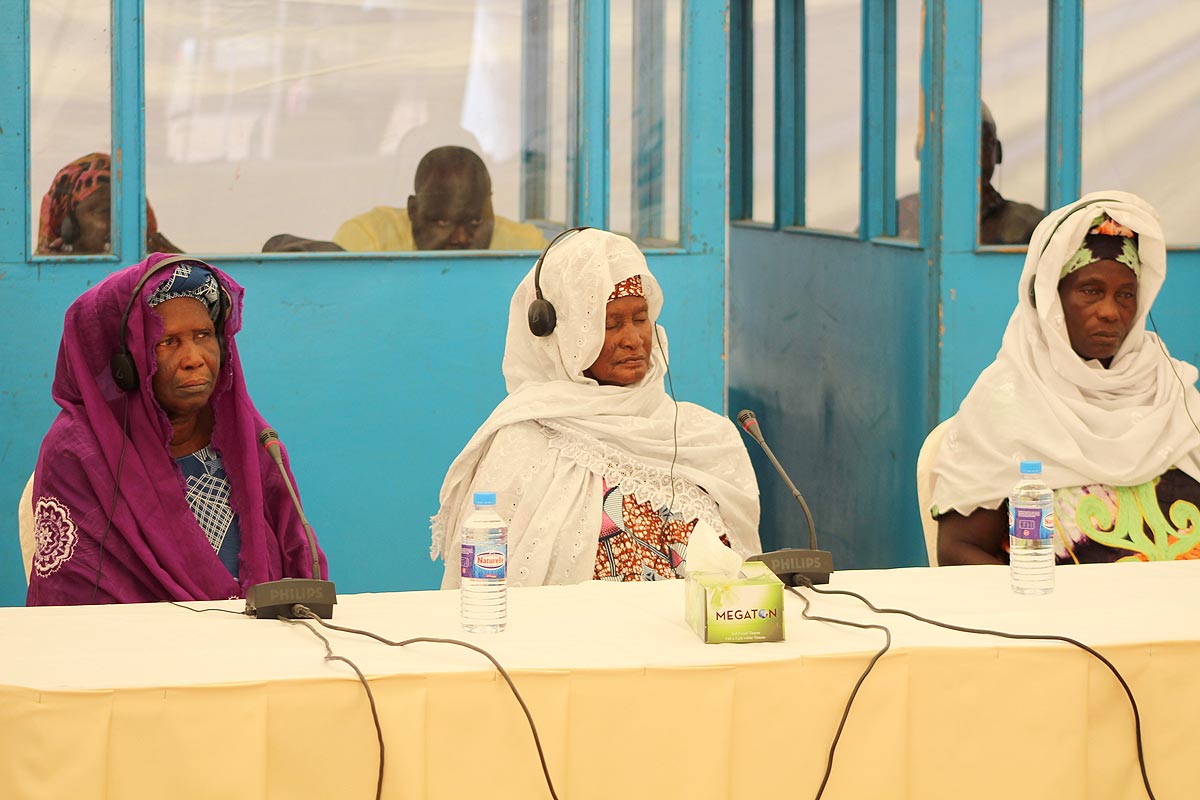
Sixty-two year old Lamarana Jallow testified with 2 other women, Sukai Jallow and Fatou Sowe. They were all forcefully captured in a village called Ganloya, a little over an hour drive from Banjul. Like all others, they were told they had a sickness and needed some cure. “I was at the market at Ganloya, when the witch doctors came and captured me,” said Jallow. Their batch was taken to a nearby village, Makumbaya, where dozens were waiting in a bus. Then they were taken to a residence in Kololi where they were given a concoction. “After I took the concoction, I had no idea where I was. I spent the whole night unconscious until 10 a.m the following morning,” Jallow testified. When the three old women woke up, they said they were stripped naked by the Green Boys and bathed with a smelly concoction. They would be released on that day. But the humiliation would stay with them for the rest of their lives: when they came back to their community they were stigmatized as witches.
Hallucinations and stomach pain
Victims from Jambur, Ganloya and Makumbaya who testified before the TRRC all endured similar fate. Ensa Badgie also said he heard the army, the intelligence community and other state institutions were affected too, alongside the police.
Karamo Bojang leads the Muslim congregational prayer in the village. Him and his son Omar are the religious leaders in Jambur. Yet that would not spare them. Both were captured, humiliated and forced to drink a concoction. Omar would not remember what happened after he drank it. He said he became unconscious until the following morning.
Others described hallucinating, vomiting and suffering stomach pain. “After drinking the concoction, you could only sit or lie down because of pain,” recalled 74-year old Dembo Mamu Bojang, from Jambur. “My stomach pains, until this moment I cannot do anything,” also said Masirending Bojang.
After Jambur, the TRRC plans to go to Foni, the region of former President Jammeh which, according to accounts, was the most affected in the country by the witch hunting.


